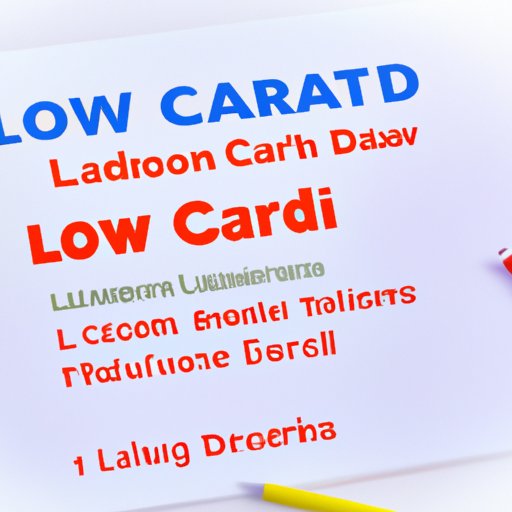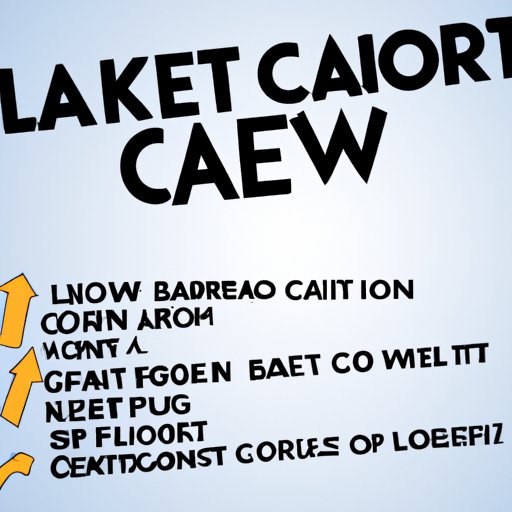Introduction
A low-carb diet is a type of eating plan that restricts carbohydrates, such as sugars and starches, while emphasizing foods high in protein and fat. The goal of a low-carb diet is to reduce your overall carbohydrate intake, which can help you lose weight, lower blood sugar levels, and improve your health. But how many carbs are allowed on a low-carb diet?

Definition of Low Carb Diet
The term “low-carb diet” is used to describe any eating plan that restricts carbohydrates. Depending on the type of diet, the amount of carbs you’re allowed to eat can vary. Generally, a low-carb diet requires you to limit your total carbohydrate intake to less than 130 grams per day, but some diets allow up to 200 or even 300 grams of carbs per day.

Benefits of Eating Low Carb
Research shows that low-carb diets can have many benefits, including weight loss, improved blood sugar control, and reduced risk of heart disease. They can also help reduce inflammation and improve cholesterol levels. However, it’s important to note that not all low-carb diets are created equal, and some may be more beneficial than others.

Types of Low Carb Diets
There are several different types of low-carb diets, including the ketogenic (keto) diet, Atkins diet, and South Beach diet. Each of these diets has slightly different guidelines for how many carbs you’re allowed to eat, so it’s important to understand the differences between them before starting any new eating plan.
Keto Diet
The keto diet is one of the most popular low-carb diets. It typically involves eating fewer than 50 grams of carbs per day and increasing your intake of healthy fats. This diet puts your body into a state of ketosis, which is when your body starts burning fat for energy instead of glucose.
Atkins Diet
The Atkins diet is another popular low-carb diet that restricts carbohydrates initially and gradually adds them back in. On this diet, you’ll start by limiting your carb intake to 20 grams per day and then gradually increase it over time. This diet also encourages you to focus on eating healthy fats and proteins.
South Beach Diet
The South Beach diet is a moderate low-carb diet that allows for some higher-carb foods, such as fruits and whole grains. On this diet, you’ll limit your carb intake to no more than 130 grams per day and focus on eating lean proteins, healthy fats, and fiber-rich foods.
Recommended Daily Carbs Intake on a Low Carb Diet
General Guidelines
Most low-carb diets recommend limiting your daily carb intake to between 50 and 130 grams per day. This can vary depending on the type of diet you’re following and your individual needs. For example, if you’re following the keto diet, you’ll likely need to keep your carb intake to fewer than 50 grams per day.
Calculating Net Carbs
When counting carbs on a low-carb diet, it’s important to calculate your net carbs, which is the total amount of carbs minus the amount of fiber and sugar alcohols. For example, if a food contains 30 grams of carbs and 10 grams of fiber, the net carbs would be 20 grams. Most low-carb diets recommend focusing on net carbs, rather than total carbs.
How to Count Carbs on a Low Carb Diet
Tracking Your Carb Intake
To ensure you’re getting the right amount of carbs each day, it’s important to track your carb intake. You can do this by using an app or website that tracks your food intake, or by keeping a journal of what you’re eating each day. This will help you stay on track with your diet and make sure you’re getting the right amount of carbs.
Subtracting Fiber and Sugar Alcohols
When counting carbs on a low-carb diet, it’s important to subtract the amount of fiber and sugar alcohols from the total amount of carbs. For example, if a food contains 30 grams of carbs and 10 grams of fiber, the net carbs would be 20 grams. This can help ensure you’re staying within your daily carb limit.

Tips for Making Healthy Low Carb Choices
Choose Whole Foods
When following a low-carb diet, it’s important to focus on eating whole, unprocessed foods. These include lean proteins, non-starchy vegetables, nuts, seeds, and healthy fats. These foods are lower in carbs and provide essential nutrients for good health.
Avoid Processed Foods
It’s also important to avoid processed foods, such as packaged snacks, sugary drinks, and fast food. These foods are often high in carbs and low in essential nutrients. Instead, focus on eating whole, unprocessed foods that are rich in nutrients and lower in carbs.
Examples of Low Carb Meal Plans
Here are some examples of healthy low-carb meal plans:
Breakfast
Eggs cooked in olive oil and topped with avocado, spinach, and tomatoes; Greek yogurt with berries and nuts; or a smoothie made with almond milk, protein powder, greens, and nut butter.
Lunch
A salad with grilled chicken, feta cheese, olives, tomatoes, cucumbers, and vinaigrette dressing; turkey and cheese roll-ups with lettuce and mustard; or a bowl of vegetable soup with a side of grilled salmon.
Dinner
Grilled steak with roasted vegetables; roasted salmon with quinoa and a green salad; or a stir-fry made with chicken, broccoli, peppers, and mushrooms.
Snacks
Hard-boiled eggs, celery sticks with almond butter, or a handful of unsalted nuts.
Conclusion
A low-carb diet can be a great way to improve your health and lose weight. However, it’s important to know how many carbs are allowed on a low-carb diet and how to count them. By tracking your carb intake and making healthy low-carb choices, you can ensure you’re getting the right amount of carbs each day. With the right meal plan and some dedication, you can successfully follow a low-carb diet and reap the many benefits it offers.
(Note: Is this article not meeting your expectations? Do you have knowledge or insights to share? Unlock new opportunities and expand your reach by joining our authors team. Click Registration to join us and share your expertise with our readers.)
